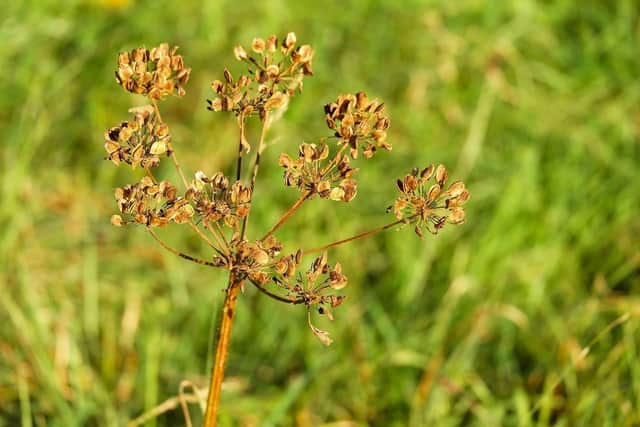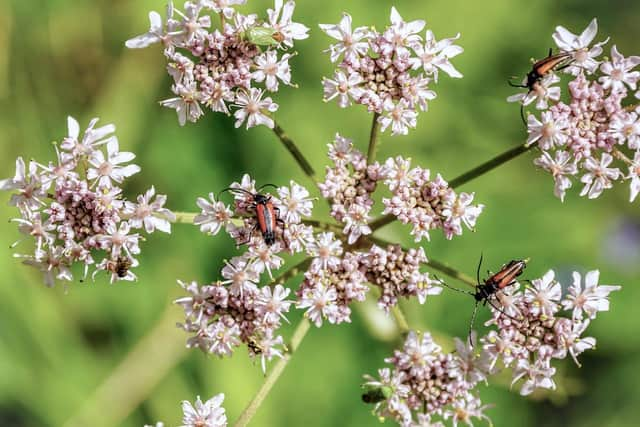Hogweed spotted in in Derbyshire - Britain's most dangerous plant
and live on Freeview channel 276
Giant hogweed (Heracleum Mantegazzianum) has recently been spotted growing in various locations across the United Kingdom – including Derbyshire.
It goes by several different nicknames – giant cow parsnip, cartwheel-flower and hogsbane are just a few examples. It may sound harmless, but it’s a dangerous plant that should be treated with caution.
Advertisement
Hide AdAdvertisement
Hide AdThe plant has been spotted near Chesterfield and Bakewell – so if you’re living in either of these areas, keep an eye out for it. It has also been sighted on the Monsal trail.


What is hogweed and why is it dangerous?
Hogweed is an invasive species of flora to the UK, orginating in Eastern Europe and Western Asia – mainly southern parts Russia and the baltic states. It can grow as tall as five metres and can cover a space as wide as two metres under ideal growing conditions.
It can cause second degree burns, blisters and even blindness in extreme cases – it isn’t to be taken lightly. Furthermore, it can cause respiratory issues if you breathe in particles from the sap.
Hogweed can germinate in several different ways. Its spores may be carried by the wind, but can also be carried further distances by animals or water.
Advertisement
Hide AdAdvertisement
Hide Ad

What should I do if I encounter hogweed?
If you come into contact with hogweed, immediately wash the affected area and keep it away from direct sunlight as you would with a burn. The secreted sap of hogweed is the dangerous part – it is phototoxic, which means that it will prevent your skin from being able to adequately protect itself from the sun.
As previously mentioned, should the sap come into contact with your eyes, it can also cause blindness. As such, avoid physical contact with hogweed at all costs.
Despite this, it’s extremely unlikely to be fatal – no recorded deaths have ever been attributed to hogweed.
It is illegal to grow hogweed under the 1981 Wildlife and Countryside act. If there is an abundance of hogweed growing on land that you own, you may be ordered by local authorities to remove it – or face a potential fine.